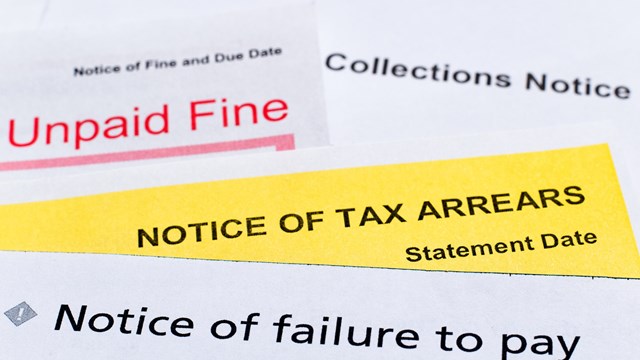The feel of the sand and the sun; the smell of sunscreen, and the view from the boardwalk carry a huge importance for New Jerseyans and the Garden State's economy. Last year's Superstorm Sandy almost completely destroyed many of the seaside towns, demolishing boardwalks and amusement parks, flooding homes and businesses. The damage was historic, and many feared that over a century of summer traditions would not be back for the following summer. Thanks to federal assistance and rebuilding efforts, those fears have not been realized. All in all, The Jersey Shore has rebounded from the destruction, and New Jerseyans are appreciating the beaches this year more than they likely have in years.
Rebirth for The Shore
Memorial Day marked the official reopening of The Shore after the devastation it experienced post Superstorm Sandy—an estimated $37 billion. The Shore boardwalks and the rides, restaurants and shops that make them world-famous were totaled, destroying a tourist attraction that rakes in roughly $24 billion a year. The Shore, while not completely back at full force (Gov. Chris Christie says 80 percent has been restored), is ready to entertain millions this summer.
The state of New Jersey saw a tremendous amount of rebuilding take place over the last six months, the vast majority of it from federal aid. While several federal agencies have poured millions of dollars into repairing roads, and other crucial infrastructure, federal assistance to private homeowners and businesses also played a large role in recovery. So far, as of late June, the Federal Emergency Management Agency (FEMA) has awarded more than $556 million in recovery funds to shore towns. FEMA recently awarded more than $10 million in Public Assistance grants to Seaside Heights and Spring Lake municipalities to go toward boardwalk repairs. And to the relief of Shore business owners, FEMA announced on June 26th that it will cover 90 percent of recovery and rebuilding costs.
But federal dollars are not the only source for the New Jersey coast's reconstruction. In order to put the Shore back on the map, New Jersey Transit added express summer rail service to The Shore on June 2 in an effort to make the commute to the shore towns easier. Four weekend express trains are now running between New York Penn Station and Long Branch.
A great deal of federal relief went to large public projects like the boardwalk, but relief efforts to rebuild the residential side of The Shore and the rest of New Jersey have also been substantial. As of June 14, $400.5 million in FEMA grants were approved for individuals and households. The National Flood Insurance Program made $3.5 billion in payments on claims as of June 17. Nearly 262,000 people contacted FEMA for help.
About $600 million in federal funding has been allocated, according to the New Jersey Department of Community Affairs (DCA) to help eligible primary homeowners rebuild their Superstorm Sandy-impacted homes. The Rehabilitation, Reconstruction, Elevation & Mitigation (RREM) program provides funding to help Superstorm Sandy-affected owners repair, elevate or reconstruct their homes. RREM will provide grants to eligible homeowners for up to $150,000 and is intended to provide extra financial assistance to those still in need after receiving aid.
In addition to financial assistance, RREM provides extra resources such as repair specifications and highly qualified builders to ensure all work completed is of high quality and sustainability. The program is open to single-family primary residences and owner-occupied units in multi-unit properties such as townhomes, duplexes, condos and co-ops.
New Jerseyans from all different backgrounds are banding together to rebuild homes for the storm survivors. More than 60 realtors from across the state have come together to reconstruct homes as a part of the New Jersey Association of Realtors’ Housing Opportunity Foundation, an organization that partners with Habitat for Humanity to build homes for those in need. NJARHOF’s latest project entailed partnering up with Cape May County Habitat for Humanity to renovate a Whitesboro-based family’s home. Along with donating $40,000 towards the project, NJARHOF provided hundreds of volunteer hours to help with the home’s renovation.
History of the Shore
For years, the Jersey Shore held more regional relevance. Southern New Jerseyans and residents of the Philadelphia metropolitan area, as well as Northern New Jerseyans flocked to the expansive beaches. The New Jersey Shore was the top vacation destination for East Coasters, above even Cape Cod and the Hamptons.
It almost goes without saying the the Jersey Shore has won a new place in the national memory as Snooki’s favorite party spot, but the shore's depiction on MTV is just a sliver of a rich history that goes back over one hundred years. The Shore experienced its first tourist boom in the late 19th century after the expansion of railroad technology, which allowed access to places like Sandy Hook and Red Bank. Tourism surged in 1916 when North New Jerseyans sought refuge from the deadly heat wave and polio epidemic that struck the Northeast. Despite a series of deadly shark attacks that same year, tourism continued to increase steadily. As the urban centers of New York City, Newark, and Philadelphia continued to expand with more working class people, scores of families sought to escape the heat of summer in the city. More commuter roads and bridges. were built to accommodate the influx of vacationers and beachgoers. The Shore popularity thrived even throughout the Great Depression, providing a sandy getaway to hundreds of thousands. Later, the expansion of highways from Philadelphia and New York to South Jersey made the ease of travel to a summer Shore escape easier than ever, thus solidifying its spot as the most popular summer retreat in the Northeast.
Must-Visit Shore Towns
Many New Jerseyans know the Shore is more than just the boardwalks and amusement parks of Seaside Heights, but some still might be surprised that the Shore consists of more than 40 communities, spanning 217 miles from Sandy Hook to Cape May. Each shore town is like a village unto itself, offering something for everyone.
Young adults do flock to Seaside Heights for its bustling restaurants, boardwalk rides and games—and of course a thriving nightlife of bars and clubs. The Heights attracts up to 65,000 visitors a day. This borough is also known for having a large number of apartments and shore houses, which many young people rent out during the hottest months, and fit in as many beds as possible to keep individual rents down.
If that doesn't strike you fancy, which would include most people, Ocean City is the antithesis of the party-centric Seaside Heights. The shore town, which was dubbed the “Best Family Beach of 2005” by the Travel Channel, has banned the sale of alcoholic beverages since it was founded in 1879.
Cape May, which is at the southernmost tip of the Cape May Peninsula, has long been regarded as one of the nation's oldest vacation spots. World-renowned for its Victorian-inspired architecture and peaceful coastlines, Cape May is the perfect place to go for a quiet, relaxing getaway.
Atlantic City is considered the "Gambling Capital of the East Coast," and is currently home to 12 casinos, which rake in about $3 billion in annual gaming revenue.
Long Branch was like the Cannes of the United States from the late 19th century up until the 1920s—an exclusive beach resort for the glamorous and wealthy. President Grant made the city a popular destination after vacationing there in 1869. Presidents Hayes, Garfield, Arthur, Harrison, McKinley, and Wilson followed suit. It’s now best known for Pier Village, the epicenter of shopping and dining, and its two-mile boardwalk.
Asbury Park is best known for being a hub of rock music, with musicians like Bruce Springsteen, Jon Bon Jovi and Patti Smith flocking to it during the 1970s and 1980s. Aside from its rock roots, the town is also known as having a large gay community, which began burgeoning the 1950s. It’s home to the Empress Hotel, New Jersey’s only gay-oriented hotel. Asbury Park is also known for its fishing pier, attributing to the New Jersey Marine Sciences Consortium ranking it as having the sixth-best beach in New Jersey in 2008.
Though the Jersey Shore is not yet totally rebuilt, it will still be an important summer destination. But, harder questions will have to begin to get answered about how the communities on the water will cope with an increasing volume of severe weather caused by climate change. Should houses on the water continue to get rebuilt over and over again on coast? Should businesses and infrastructure close to the beach be set back or meet tougher flood standards? Will the state and coastal towns be able to maintain the beach and adequately protect against erosion? In the coming years and decades, New Jerseyans will have to come up with solutions and answers in order to hand off the tradition of the Shore to future generations.
Enjolie Esteve is an editorial assistant at The New Jersey Cooperator. Editorial Assistant Tom Lisi contributed to this article.







2 Comments
Leave a Comment